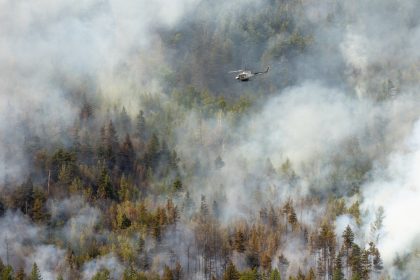City life pulses with energy, but for millions with asthma, urban environments can transform a manageable condition into a life-threatening struggle. Packed streets, towering buildings, and relentless noise create a perfect storm of triggers that tighten chests and steal breath. From toxic air to scarce medical care, the challenges pile up, pushing vulnerable residents toward dangerous episodes. These five deadly risks reveal how cities turn asthma into a silent menace, threatening lives in ways that demand attention and action.
1. Choking on polluted air
Urban air hangs heavy with pollutants that inflame asthmatic lungs. Car exhaust, factory fumes, and construction dust flood cities, spiking levels of particulate matter and ozone. Busy streets in downtown cores trap these toxins, making every inhale a risk. On hot summer days, smog thickens, triggering wheezing and shortness of breath. Studies link long-term exposure to polluted air with worsening asthma control, sending thousands to emergency rooms yearly. For city dwellers, simply stepping outside can spark an attack, as invisible particles burrow deep, turning routine days into health hazards.
2. Trapped by poor housing conditions
Many urban homes, especially in older neighborhoods, harbor asthma triggers that strike without warning. Mold thrives in damp, poorly ventilated apartments, releasing spores that irritate airways. Cockroaches and rodents, common in crowded buildings, leave droppings that spark allergic reactions. Peeling paint and crumbling drywall add dust to the mix, clogging lungs already strained by city life. Low-income renters often lack the power to demand repairs, stuck in spaces where every breath risks a flare-up. These conditions don’t just worsen asthma—they push it toward life-threatening crises, especially during humid seasons.
3. Stress amplifies every wheeze
City living hums with stress, from long commutes to financial pressures, and for asthma sufferers, this mental strain tightens airways. Noise pollution—blaring horns, screaming sirens—keeps nerves on edge, spiking cortisol that can worsen inflammation. Overcrowded buses and packed sidewalks add tension, leaving little room to relax. Chronic stress disrupts sleep, weakening the body’s ability to fight off triggers. When panic sets in during an attack, shallow breathing spirals, making symptoms harder to control. In urban jungles, stress isn’t just a feeling—it’s a physical force that can tip asthma into dangerous territory.
4. Emergency care out of reach
When asthma flares turn deadly, quick access to care saves lives, but cities often fail to deliver. Overburdened hospitals in urban centers face long wait times, especially in underserved areas where clinics are scarce. Ambulance delays, slowed by gridlocked streets, stretch critical minutes into hours. Low-income residents, juggling high costs and no insurance, skip inhalers or doctor visits, gambling with their health. During severe attacks, this lack of access proves fatal, as airways close before help arrives. The gap between need and care leaves city dwellers vulnerable, turning treatable episodes into tragedies.
5. Extreme weather sparks sudden attacks
Urban climates, shaped by concrete and heat, amplify weather swings that hit asthmatics hard. Summer heatwaves trap pollutants, creating smog that chokes lungs. Sudden cold snaps dry airways, triggering spasms in sensitive chests. Thunderstorms stir pollen and mold, sending allergen levels soaring. Cities magnify these shifts—pavement absorbs heat, spiking temperatures, while tall buildings funnel winds that spread irritants. For those with asthma, a walk on a stormy day can end in gasping panic, as weather flips from mild to menacing. These unpredictable patterns make every season a gamble for urban breathers.
Why these risks matter
These five dangers—polluted air, poor housing, stress, scarce care, and extreme weather—turn asthma into a deadly threat for city dwellers. Urban areas concentrate triggers, with air quality often failing federal standards in major metros. Substandard housing plagues millions, especially in low-income zones, while stress festers in the grind of city life. Emergency rooms handle over 1.8 million asthma visits annually, many preventable with better access. Weather volatility, worsened by urban heat islands, catches sufferers off guard, spiking hospital admissions. Together, these risks don’t just worsen asthma—they claim lives, hitting hardest where help is thinnest.
The toll reaches beyond health. Families lose wages caring for sick loved ones, while kids miss school during flare-ups, falling behind. Communities of color, often stuck in polluted or rundown areas, face disproportionate harm, deepening inequality. Businesses feel the strain as workers call out, battling symptoms triggered by the urban grind. Cities, built for progress, end up choking their own people, leaving asthma sufferers to navigate a maze of threats just to breathe. This crisis demands more than inhalers—it calls for systemic fixes to make urban life livable.
Paths to safer breathing
Tackling these dangers requires bold steps, though change moves slowly. Cleaner air starts with stricter emissions rules for vehicles and factories, paired with more green spaces to filter pollutants. Housing reforms could force landlords to fix mold and pests, especially in public housing where need is greatest. Stress relief might come from quieter streets—less honking, better transit—to ease daily tensions. Expanding clinics in underserved areas and subsidizing meds would close care gaps, while mobile health vans could reach isolated pockets. Weather alerts tailored for asthmatics, flagging high-risk days, could save lives with timely warnings.
For now, city dwellers cope with practical moves. Air purifiers cut indoor triggers, though they’re costly. Sealing windows keeps out smog, and avoiding outdoor exercise on hazy days helps. Stress management, like deep breathing or short walks in parks, calms nerves without breaking banks. Stockpiling inhalers when possible prevents desperate shortages. Relocating to less polluted suburbs tempts some, but high costs keep many rooted. These band-aid fixes hold the line, but they can’t erase the urban asthma trap—only broader action can do that.
Surviving the urban air
Navigating city asthma means staying vigilant. Check air quality apps before heading out, skipping walks when pollution peaks. Inspect rentals for mold or leaks before signing leases, even if it means passing up a deal. Find quiet corners—libraries, small cafes—to escape noise and stress, even for an hour. Save for emergency meds, prioritizing refills over non-essentials. On stormy days, stay indoors, keeping windows shut to block pollen. These steps don’t solve the crisis, but they carve out breathing room in cities that feel designed to suffocate.
The five grim realities—pollution, bad housing, stress, care gaps, and weather—make asthma a relentless foe for urbanites. Cities promise opportunity, but for millions, they deliver danger, tightening lungs with every block. Yet resilience persists. Sufferers adapt, dodging triggers and clinging to hope for cleaner, fairer days. Until then, they breathe carefully, fighting for air in a world that demands too much of every exhale.













